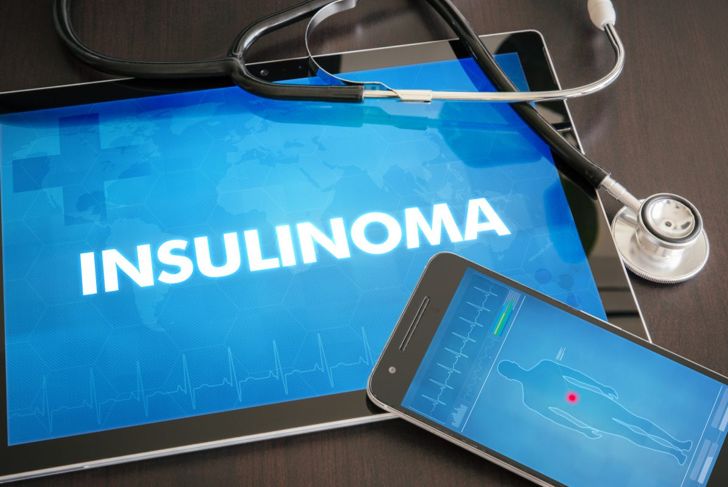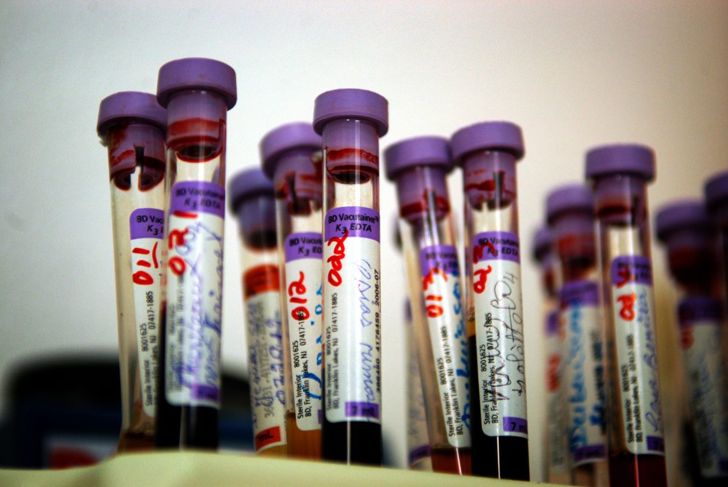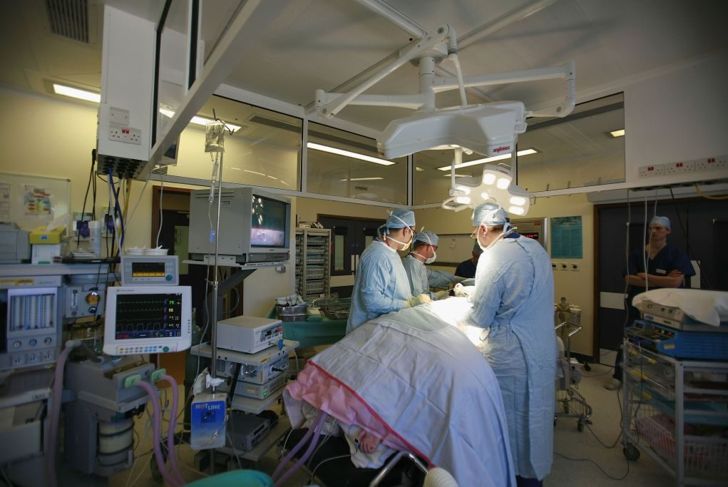Insulinomas are a rare form of tumor of the specialized beta cells in the pancreas. They occur in approximately four in one million people each year. The diagnosis can be difficult, but once confirmed, surgery is generally successful in achieving a good outcome.
What is an Insulinoma?
An insulinoma is a tumor of the pancreas, of which 90% are benign (not cancerous) and relatively small, less than two centimeters in diameter. They produce insulin, a hormone that causes lowered blood sugar (hypoglycemia). They are more common in men than women and mostly occur in people 40 to 60 years old.Normally, when the blood sugar or glucose rises, the pancreas produces insulin from the beta cells. The increase in insulin lowers the blood glucose back to normal, and the pancreas stops releasing insulin. Insulinomas do not stop producing insulin, causing blood sugar to fall past normal and beyond.
Symptoms and Signs
Classic symptoms of low blood sugar are sweating, a pale complexion, a fast heartbeat, and a tremor. Dizziness, blurred or double vision, confusion, and aggression may follow as the blood sugar falls further. If left untreated, seizures and coma may result. These symptoms and signs may occur when the blood sugar drops below 72 milligrams per decliter (72mg/dL).
Whipple’s Triad
Diagnosing an insulinoma can be challenging, as several more common conditions cause problematic low blood sugar. A doctor will suspect insulinoma when a person has low blood sugar after fasting or heavy exercise and experiences the classic symptoms of hypoglycemia, and these symptoms are relieved when they receive glucose. This is called the Whipple’s Triad and used to be the most common method for diagnosis. It can detect up to 99% of insulinomas.
Further Investigations
To investigate the diagnosis further, the doctor will require their patient to go on a 72-hour fast, during which time they will monitor blood sugar and the levels of insulin, C-peptide, and proinsulin. These latter compounds are involved in the manufacture of insulin in the pancreas and their levels will be high in people with an insulinoma. Normally, fasting reduces insulin production.The diagnosis of an insulinoma may not be obvious, as the symptoms could be attributed to psychiatric, cardiac, or neurological disorders. This may lead to delayed diagnosis — 50% of insulinomas are not diagnosed until five years after the onset of the first symptoms.Once the diagnosis has been made, surgical removal is the most effective management.
Surgical Treatment
As part of the surgical management, the surgeon must determine the exact position and size of the tumor. This will allow him or her to decide how much of the pancreas to excise to remove the tumor. Minimally invasive or laparoscopic methods may work. A computed tomography scan (CT scan) or magnetic resonance imaging (MRI) technique locates the position and estimates the size of the tumor. For benign tumors, surgery is the treatment with the most successful outcomes. For the small number of malignant insulinomas, surgery may be extensive and involve removing part of the liver if the tumor has spread.
Complications of Surgery
Operations that involve extensive surgery carry a significant risk of complications. These include diabetes mellitus, acute pancreatitis, abdominal abscesses, and pancreatic fistula resulting in a leakage of pancreatic secretions. Approximately 13% of people undergoing surgery need to have repeat surgery because the initial operation fails to remove all of the tumor.
Medical Treatment
Some doctors will prescribe medication and other treatments, often while their patient is awaiting surgery, when the insulinoma has recurred following surgery, or if the patient declines surgery or is too frail. Dietary modifications such as frequent meals can help manage fluctuations in blood sugar that cause problematic symptoms. Drugs that reduce insulin release can also help some patients become symptom-free.
Minimally Invasive Treatments
For people with multiple medical conditions or malignant tumors, surgery may not be possible or considered too high risk. Doctors may consider radiofrequency ablation in these cases. Radio waves target the tumor, killing the cancerous cells. Chemotherapy, while not curative, is also an option to slow tumor growth.
Long Term Outlook
Successful surgical removal of a benign insulinoma cures nearly 90% of people, though the existence of multiple tumors can lead to recurrence. Persistent or recurrent hypoglycemia occurs in people with multiple tumors. About 2% of people will develop diabetes mellitus after surgery. This is usually related to how much of the pancreas the doctor had to remove. If the insulinoma is malignant, 24% of people live for at least five years after treatment.
Multiple Endocrine Neoplasia Type 1 (MEN1)
MEN1 is a genetically inherited condition consisting of a group of disorders that affect the endocrine system, the collection of organs that release hormones into the bloodstream. The pancreas is one of these organs. People with MEN1 have genetic changes that put them at a higher risk of developing insulinomas, and about 5% of them develop insulinomas. People with this condition tend to be younger when they get the tumors than those without MEN1, and they are more likely to have multiple growths that recur.

 Home
Home Health
Health Diet & Nutrition
Diet & Nutrition Living Well
Living Well More
More




















